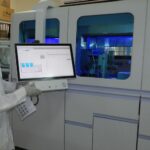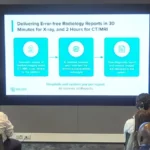A futuristic robot that uses artificial intelligence (AI) to automatically detect, classify, and repair potholed roads has been unveiled in the United Kingdom.
Dubbed ARRES (Autonomous Road Repair System) PREVENT, the autonomous robot has just undergone successful proof-of-concept testing and is now set for deployment on roads in Hertfordshire for real-world testing.
ARRES PREVENT, a collaboration between tech company Robotiz3d, academics at the University of Liverpool, and highway engineers at Hertfordshire County Council, is capable of working 70% faster than human workers.
If the test is successful, the robot could catch and repair cracks before they become too big to fix quickly. This could make road works cheaper, more efficient, and faster compared with human workers.
The robot is, however, designed to complement human teams.
“The intention is to use the AI Robot alongside our human crews rather than to replace them,” says a spokesperson for Hertfordshire County Council.
“It will autonomously find and seal cracks in the road while our team gets on with other work, helping us get more work done in a single set of works to prevent future potholes while reducing disruption to the public.”
ARRES PREVENT works by independently patrolling the roads and scanning the surface with cameras to detect depressions in the road surface.
Once it identifies a surface imperfection, the pothole repair robot will determine whether to repair it right away or add the damage in queue for later examination.
If the robot chooses immediate action, it will inject filling material into the crack to prevent water from seeping through and mitigate potential further damage.
Although the robot is unable to fill larger potholes, Robotiz3d emphasizes that the goal is to proactively prevent the formation of such potholes.
The unveiling of ARRES PREVENT signifies a transformative leap in the realm of road maintenance, showcasing the potential of autonomous robots and AI in addressing infrastructure challenges.
The collaboration among a tech company, academics, and a county council exemplifies a forward-thinking approach that integrates technological innovation, research acumen, and local governance to generate effective solutions.
By:















